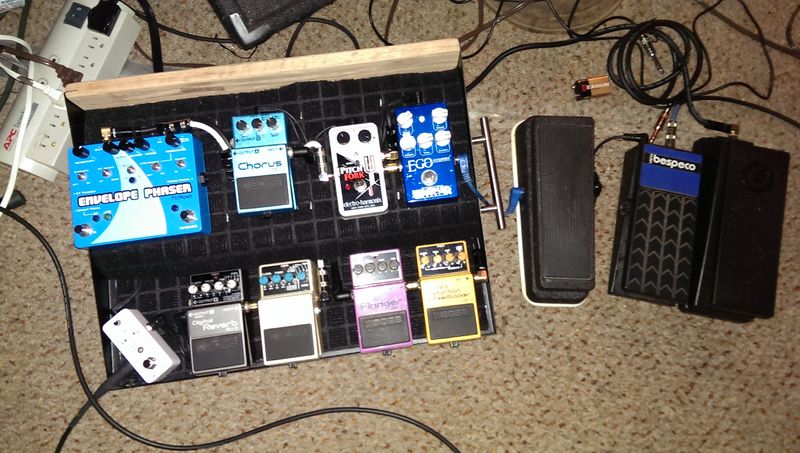Honestly, it baffles me that so many of you are so insistent on using boards with require a power supply
Very simple. I've owned that Furman pedalboard with the built-in power supply. It has limitations. These are:
1. The power outputs are 9V only. Many digital pedals require a 12V outlet. And if you use the wall wart outlets on the board to power those digital pedals, they can induce noise into most wahs on the board, some pedals, and even nearby cables. This was definitely the case with the one I owned.
2. The 9V outlets are limited to 100 milliamps each, which means they will not power most digital pedals, such as the Eventide H9, which needs 400 ma and runs on 9V power. See #1, above, as to why it's good not to use wall warts on a pedal board.
3, The 9V outlets are not individually isolated. While they each have a protection circuit, the lack of individual isolation can cause ground loops with some pedals.
These limitations aren't theoretical. My Furman pedalboard was a source of noise no matter how I arranged and hooked up my pedals, that made it unacceptable for serious studio work. Changing over to a board with a Voodoo Labs Pedal Power eliminated the noise
completely from my rig.
Granted, every rig is different, and every pedalboard will have different pedals on it. So what was problematic for me, may not be problematic for you. And live work is different from studio work.
But if you want to know why some of us "insist" on using a board with a regulated, isolated, multi-voltage, power supply that will put out more than 100 milliamps per pedal, this is why.
Incidentally, Mike Fuller of Fulltone recommends only isolated, regulated power supplies like the Voodoo Labs, as do several other manufacturers. There is a good reason for this.
I don't diss Furman products. I use their rackmount P-1800 PF-R to power my amplifiers. They make very good stuff. But others do pedal power better, I hope you now understand why I'm so insistent on using a board with a regulated, isolated power supply. Of course, I can only speak for myself.
Here's my board. The top surface where the pedals sit is hinged. Underneath there's another surface where the power supply lives. I use a Voodoo Labs 4x4. The board has two inside AC outlets. All i/O from the guitar and to the amps comes via the jacks on top of the board. The blue Lehle switch box handles three amplifiers.
The board has a matching Tolex covered lid as well. Very sturdy and studio-friendly. The pedal surface is birch ply, and doesn't bend or flex when you hit the switch on a pedal, or use the wah. That's very nice - my Furman flexed.
It's also nice to have an angled, or a two tier pedalboard. Easier access to the top row of pedals. The Furman doesn't have that. So actually, there are a lot of reasons I moved the Furman along!
Aaaaannnnddd...Furman stopped making it. So there's a reason, you can't buy one.

Here is the board with the removable lid in place. Very easy setup and move-around thing. The guy who made mine (Rockfoot Pedalboards) will configure the number and location of the I/O jacks, power outlets, power input, power switch, etc., any way that suits the customer. There are some tasty choices of both tolex and fancy woods. The board is available with or without the hinged pedal surface, though I like having the extra storage and a protected place for the power supply. The only downside? It's a little heavy. Not terrible, though, and I can move it around without problems even though I'm over 60. I don't play out any more, but I can move this thing around without any issues.











